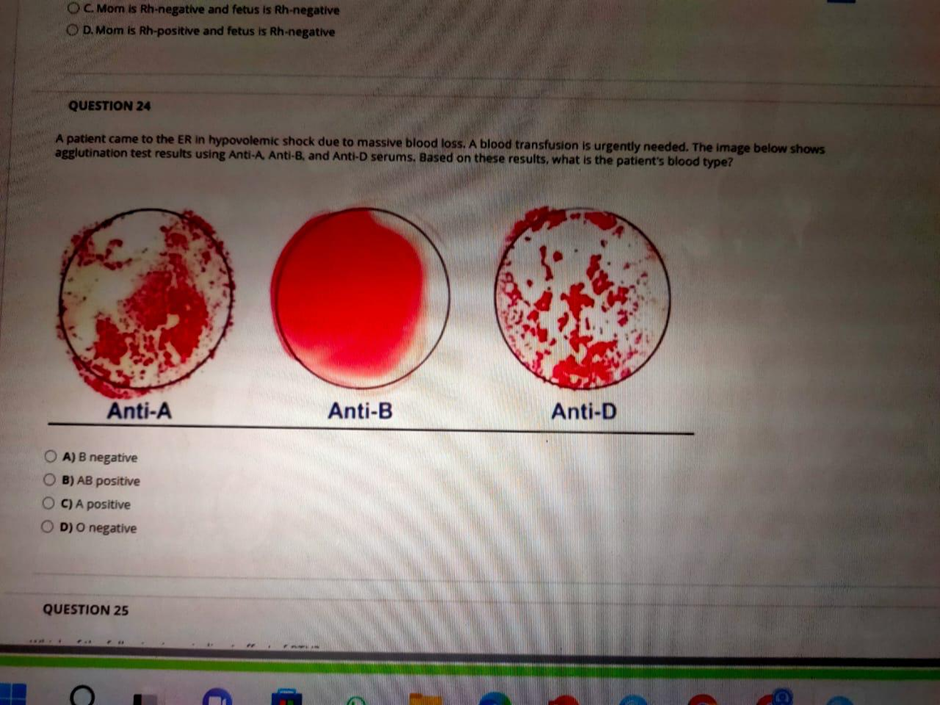A patient came to the ER in hypovolemic shock due to massive blood loss. A blood transfusion is urgently needed. The image below shows agglutination test results using Anti-A, Anti-B, and Anti-D serums. Based on these results, what is the patient's blood type?

B negative
AB positive
A positive
O negative
The Correct Answer is C
a) B negative: If the patient had B negative blood: There would be agglutination with Anti-B,No agglutination with Anti-A or Anti-D.
b) AB positive: AB positive means agglutination with: Anti-A, Anti-B, and Anti-D.
c) A positive: Agglutination with Anti-A means the red cells have A antigens. No agglutination with Anti-B means B antigens are absent. Agglutination with Anti-D indicates the Rh factor is present, making the blood type Rh positive.
d) O negative: O negative blood has no A, B, or Rh antigens, so there would be: No agglutination with Anti-A, No agglutination with Anti-B, and No agglutination with Anti-D.
Nursing Test Bank
Naxlex Comprehensive Predictor Exams
Related Questions
Correct Answer is C
Explanation
a) Hepatic portal system: This carries blood from the gastrointestinal tract to the liver, not the brain.
b) Coronary circulatory system: This system supplies the heart muscle, not involved in hormone transport from hypothalamus.
c) hypophyseal portal system: The hypophyseal portal system is a specialized vascular system that transports releasing and inhibiting hormones from the hypothalamus to the anterior pituitary.
d) Hypothalamus-hypophysial tract: This is a neural pathway used to transport ADH and oxytocin to the posterior pituitary, not the anterior.
Correct Answer is B
Explanation
a) Stimulates the formation of white blood cells: This is associated with bone marrow and not parathyroid hormone (PTH).
b) Parathyroid hormone (PTH) increases blood calcium levels by stimulating bone resorption, increasing calcium reabsorption in the kidneys, and activating vitamin D to increase calcium absorption from the gut.
c) Increases the level of sodium ions in the blood: Aldosterone regulates sodium levels, not PTH.
d) Increases the level of potassium ions in the blood: This is also regulated by aldosterone and the kidneys, not PTH.
e) Increases the level of glucose in the blood: Glucagon and cortisol are more directly involved in increasing blood glucose.
Whether you are a student looking to ace your exams or a practicing nurse seeking to enhance your expertise , our nursing education contents will empower you with the confidence and competence to make a difference in the lives of patients and become a respected leader in the healthcare field.
Visit Naxlex, invest in your future and unlock endless possibilities with our unparalleled nursing education contents today
Report Wrong Answer on the Current Question
Do you disagree with the answer? If yes, what is your expected answer? Explain.
Kindly be descriptive with the issue you are facing.
